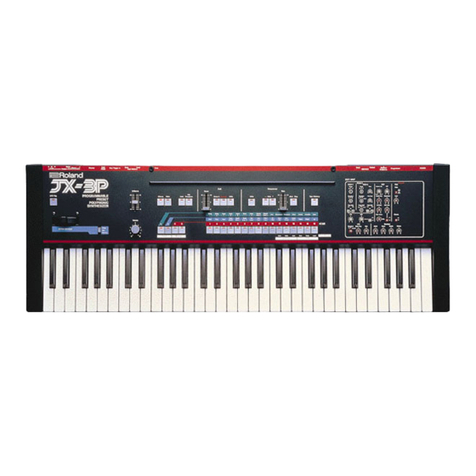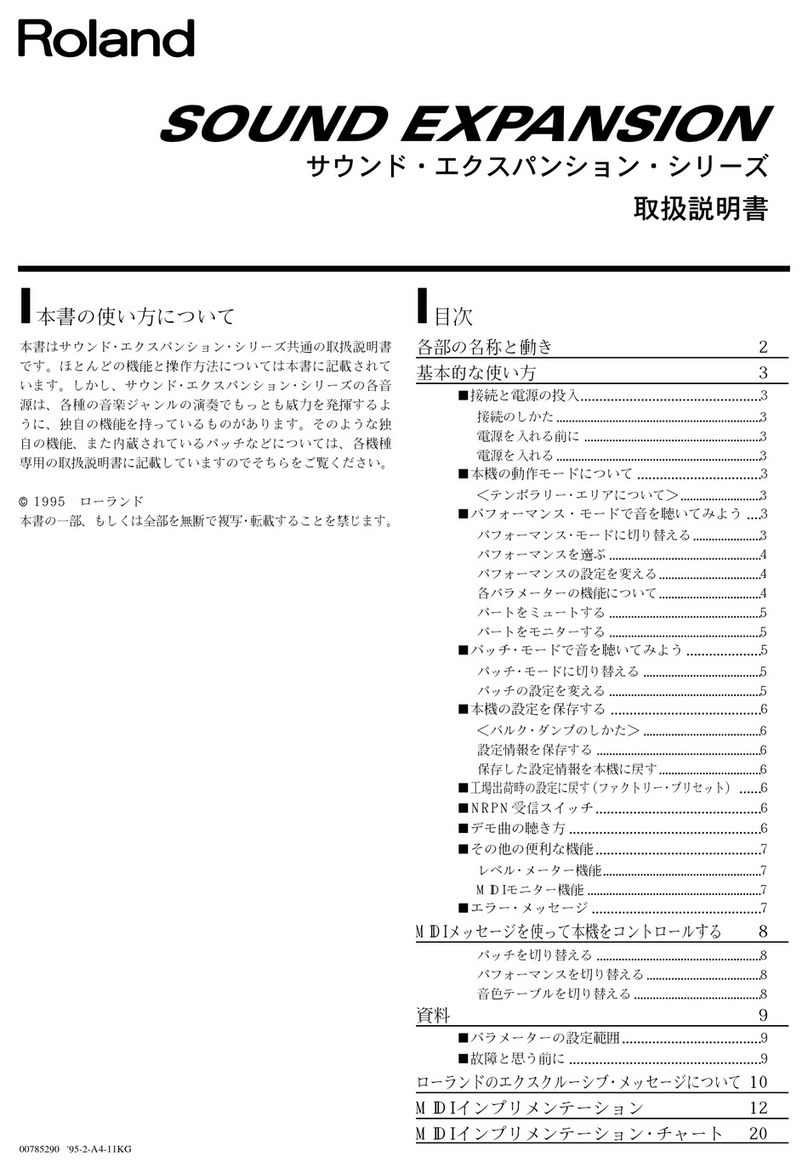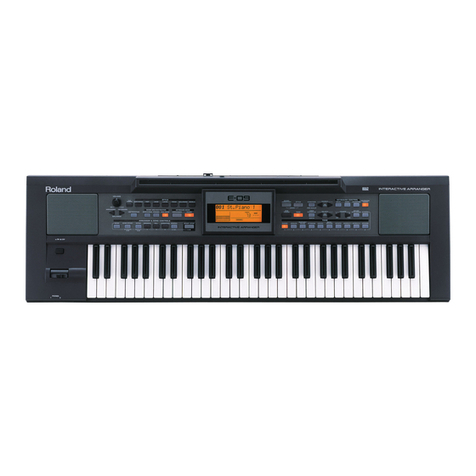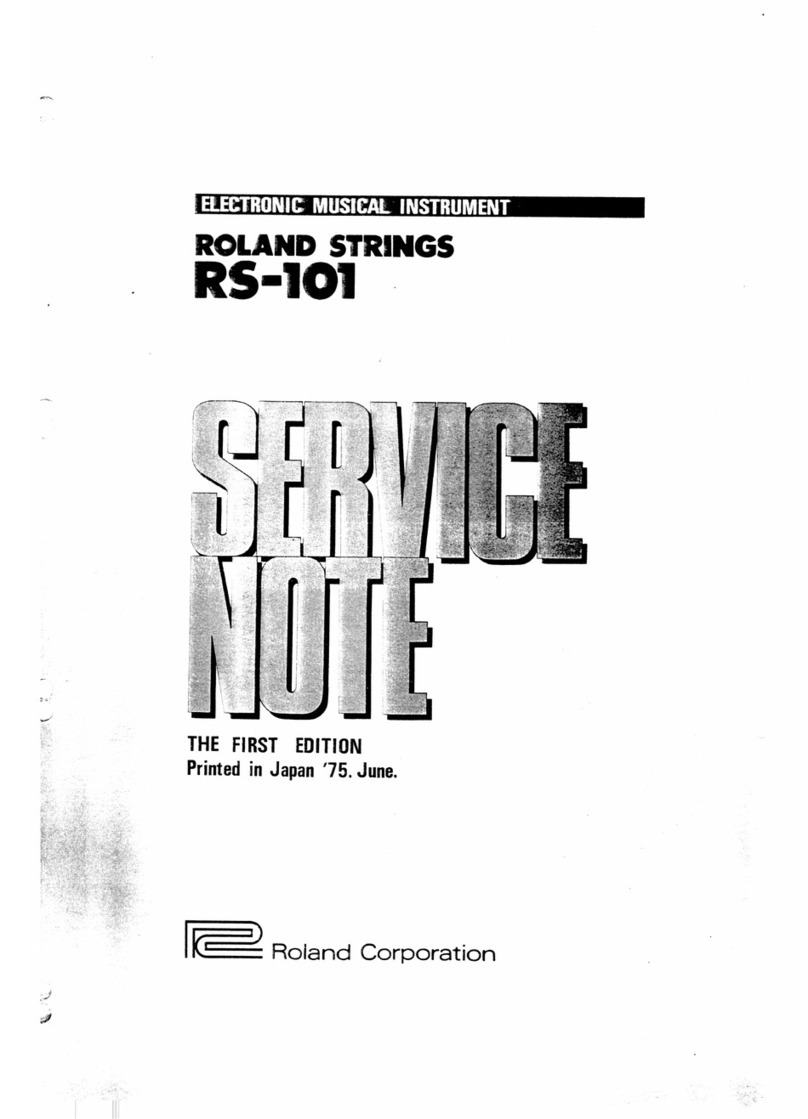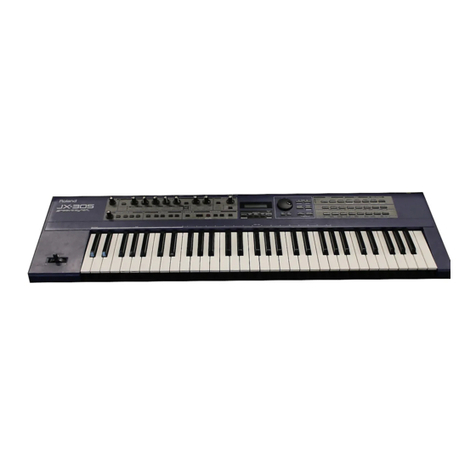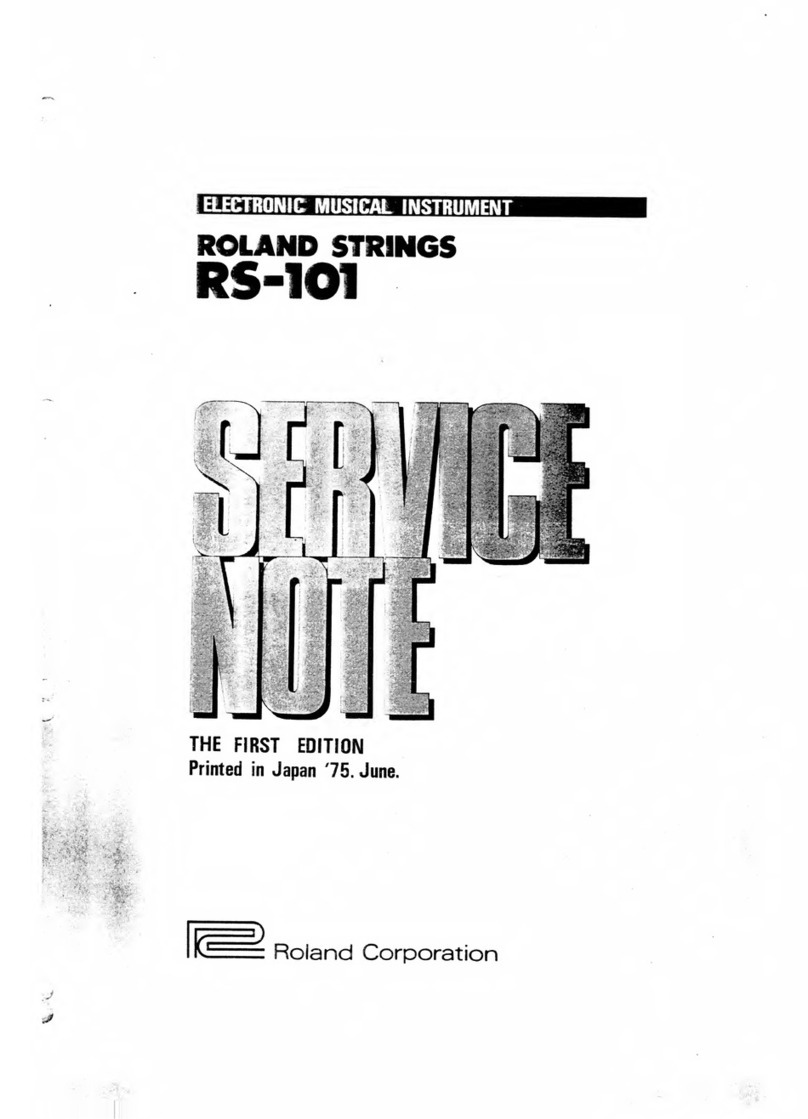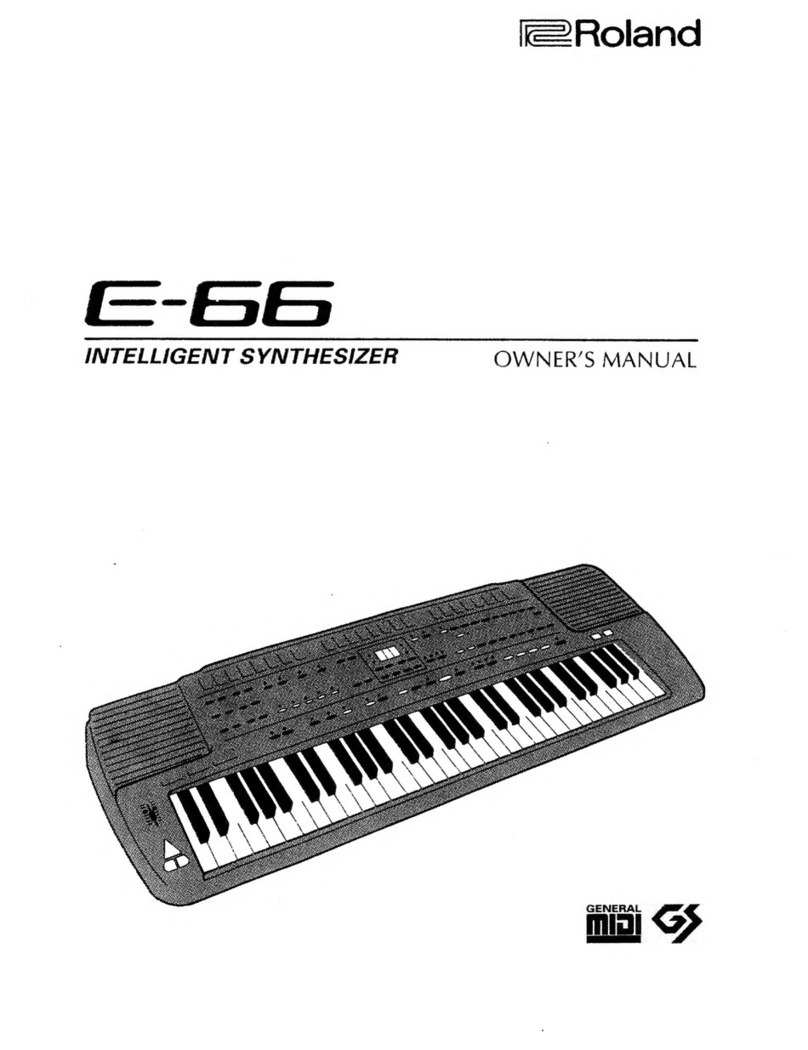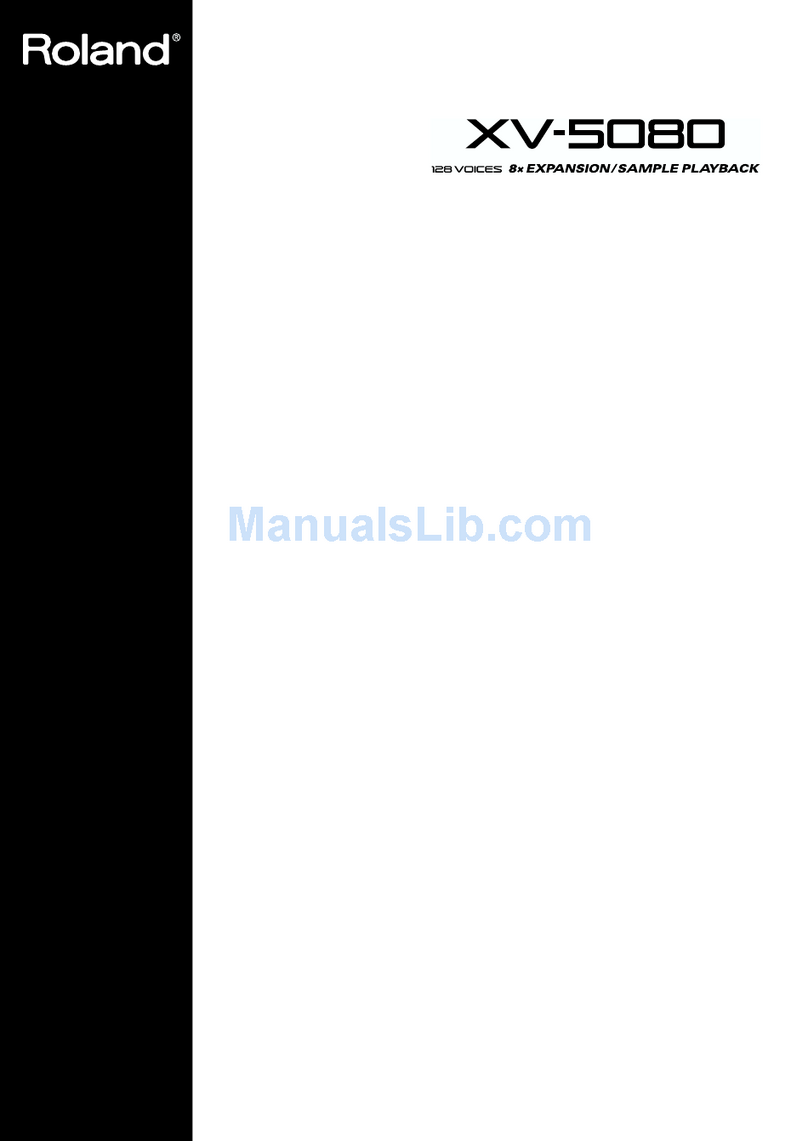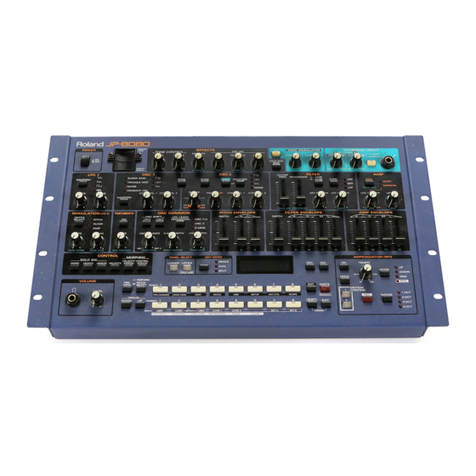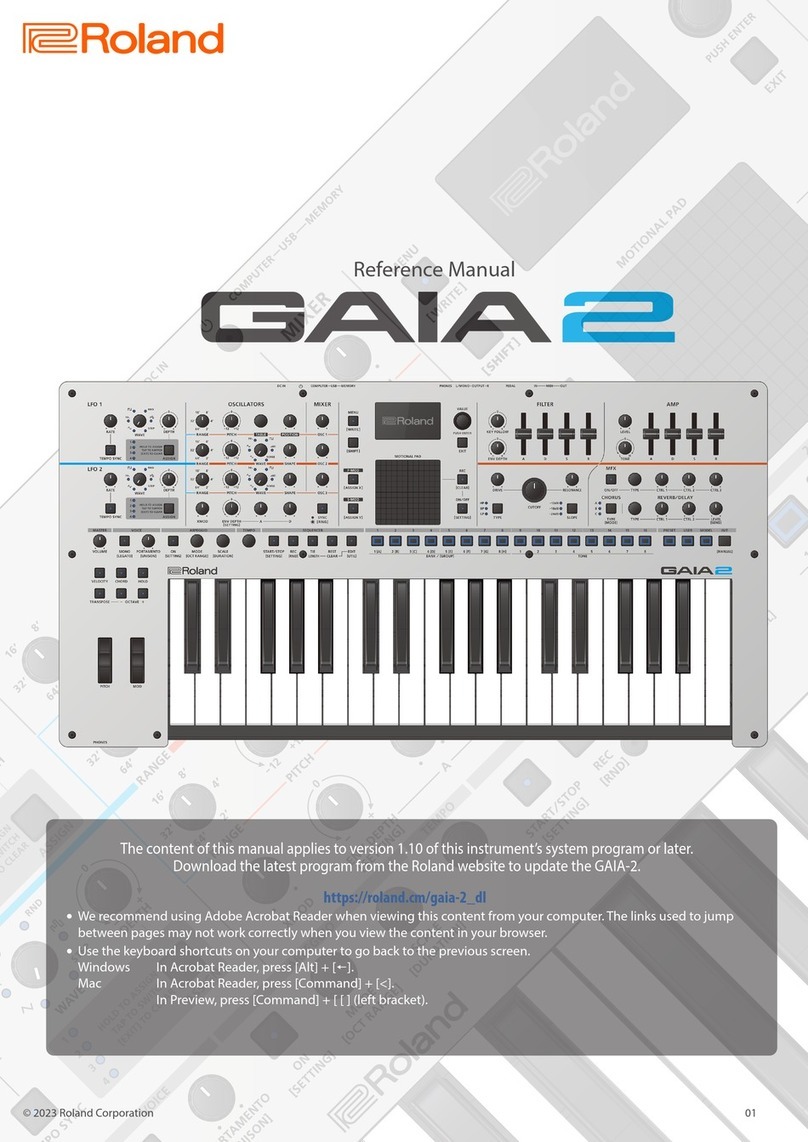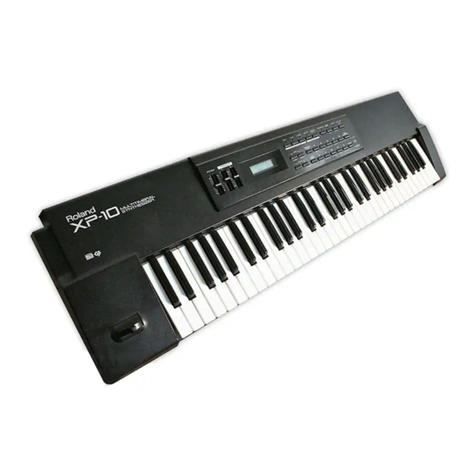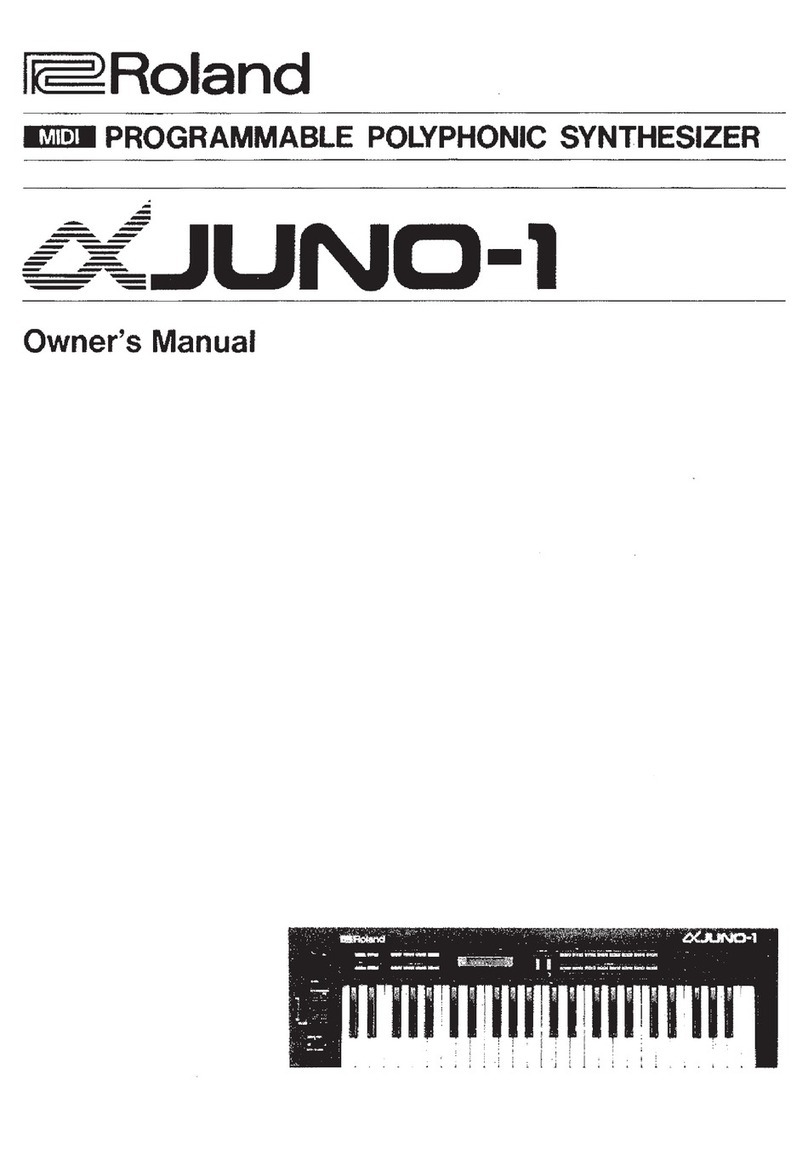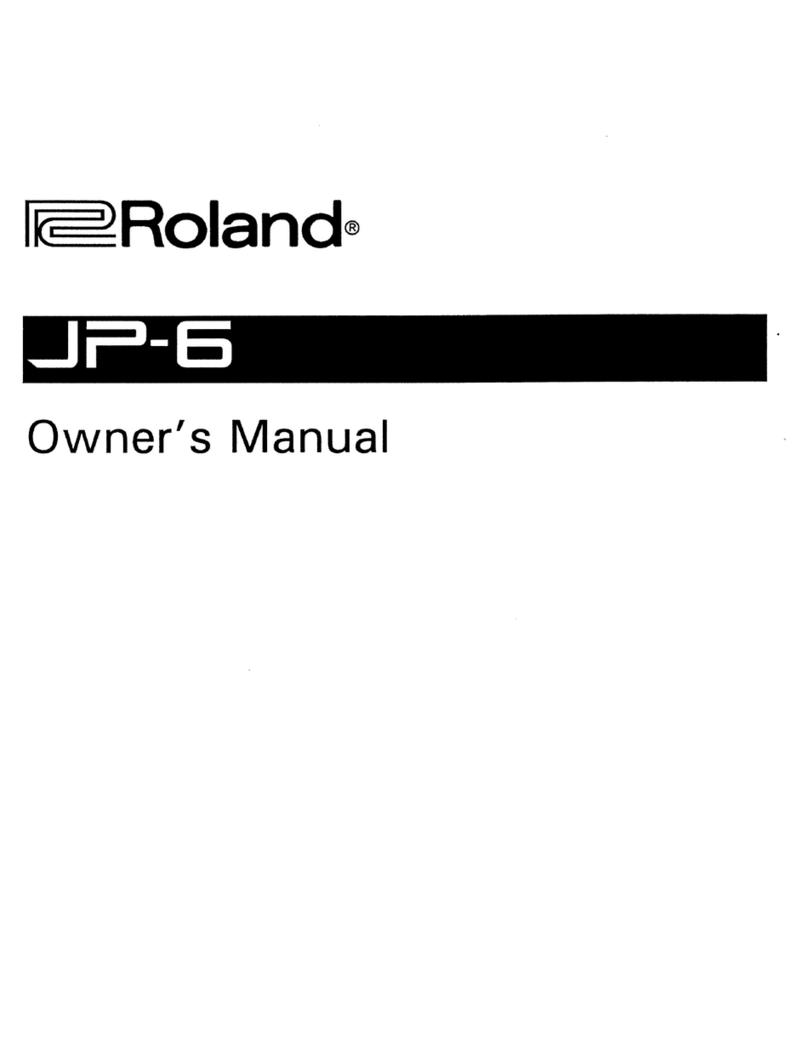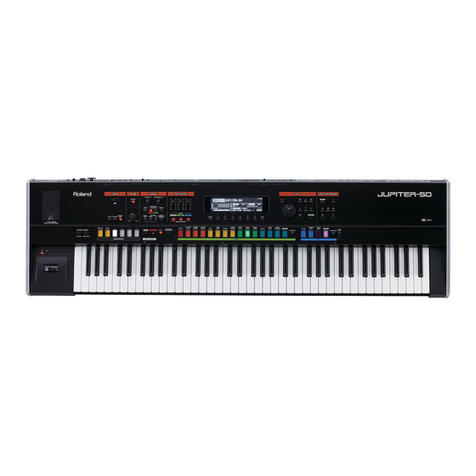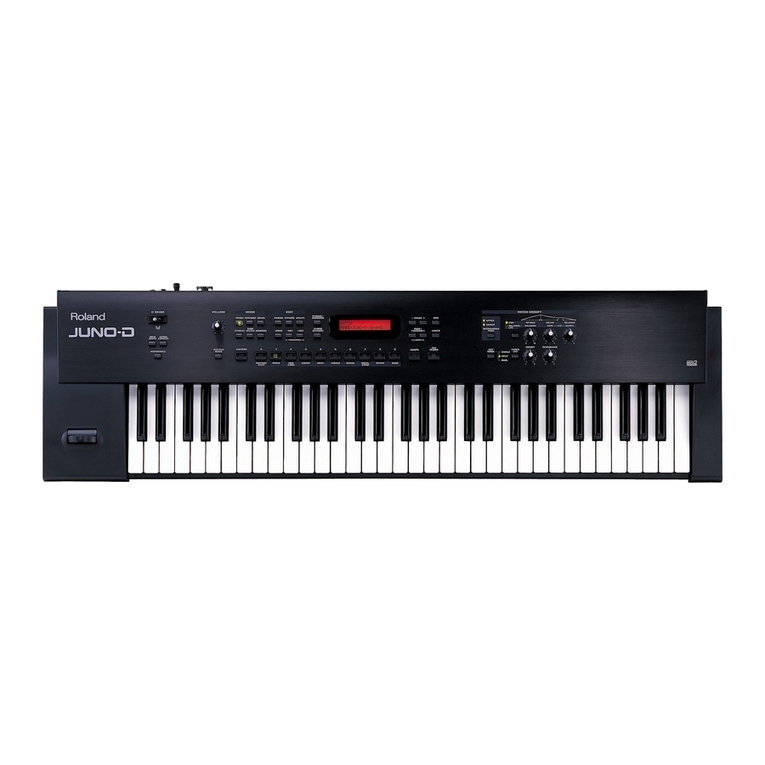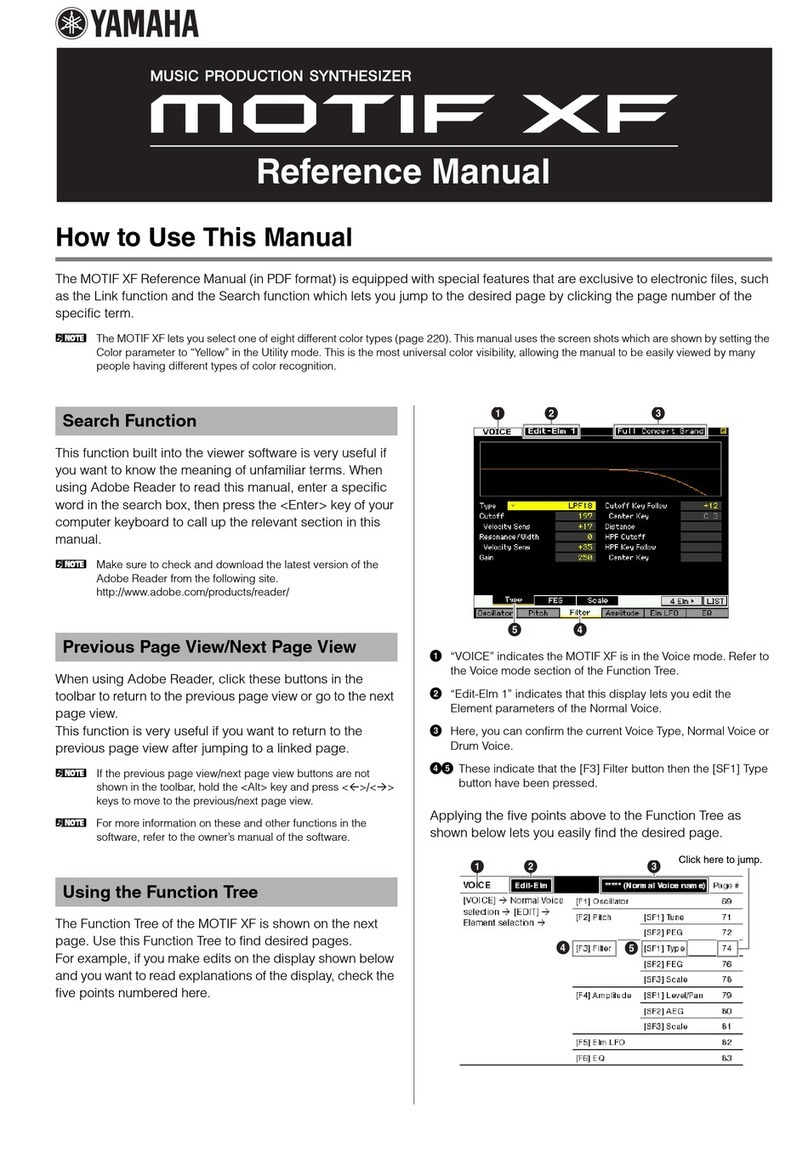
BLOCK DIAGRAM
MIDI
THRU IN PROGRAMMER
SWITCH BOARD
CIRCUIT DESCRIPTIONS
The MKS-30 accepts two kinds of external data coming
from aMIDI-equipped instrument and the Programmer
PG-200 --both in the form of aserial digital stream.
MIDI information is fed to the Main CPU as it is and
its rather distorted waveforms are re-shaped at TR3 and
TR4 on the Power Supply/Chorus Board (PS/CH BRD).
While the data from the Programmer are first converted
to parallel 8bits at Interface CPU IC62 outputs on the
Main Board.
NOTE: The circuit and the PCB of the Main Board are
revised versions of the GR-700 Guitar Synthe-
sizer module and the terminal designations
remain unchanged. Therefore, some function
names on these terminals are not strictly appro-
priate for this unit. For example, BRILLIANCE
control voltage comes to the "VCFPDL" pin.
DATA OUTPUT
Having obtained data ---concerning anote that is being
or will be generated ...from MIDI input, PG-200 and
Panel switch, the master CPU IC48 delivers data in digi-
tal format through three routes:
*To Programmable Counters (IC31— IC34) ---note
information
*To D/A converter (IC28, IC61 and RMl) ---tone
parameters and volume control signal
*To SW OUT (IC27) ---Waveform and function selec-
tions
DCO (DIGITAL CONTROLLED OSCLLATOR)
Master Oscillator TR14 (13) runs at around 4MHz and
varies its frequency as the base bias is changed from
TUNE (DCO 1and DCO 2) and FINE TUNE (DCO 2,
TR13 only). The variable range is 436 to 448Hz at A
above middle Cwith respect to the center frequency
442Hz.
Other frequency parameters such as LFO, ENV and
RANGE will have an effect through software only after
being processed by the CPU.
The CPU IC48 can accomodate MIDI note numbers
from 0to 127 while the pitch range of MKS-30 as a
whole is from 21 to 108. The CPU will shift odd notes
to the nearest octave within the range. The same func-
tion will work while RANGE is set in 16' or 4': higher
and lower octaves may repeat the same pitch.
The Master Oscillator is divided by either 1/2, 1/4 or
1/8 at IC39 (IC37) which in turn receives footage selec-
tion (RANGE setting) data from the CPU through IC41.
This will give the Programmable Counters the greater
frequency resolution capabilities (16 bits plus 2bits).
LFO, ENV AND DCO 2TUNE
These parameters do not directly affect the frequency
being generated, rather they are combined with anote
data which the CPU IC48 has obtained from MIDI IN-
PUT. These combined data are placed on the CPU data
bus and routed to the Programmable Counters 8253 ICs
31—34 as divisors.
PROGRAMMABLE COUNTERS
Programmable Counter 8253 containing three 16-bit
counters is capable of dividing high frequency signals
from the Master Oscillator according to the divisor data
from the CPU. Assuming that the master oscillator runs
at 4MHz and the divisor is 4000, the counter develops
1kHz rectangular signals. Adivisor is adata which the
CPU provides based on MIDI data and the edited daja
from the PG-200 to determine the pitch of anote being
played on the MIDI keyboard. Beside note information,
divisor data contains the following:
For DCO 1--- LFO, ENV
For DCO 2—Above plus DCO 2Tune
In SYNC mode, pulses from DCO 1are applied to the
gate of mated counter of DCO 2as reset pulses.
D/A &S/H
Parameters that determine the timbre of audio signal
flowing into Synthesizer module are converted into ana-
log equivalent (0 to 4.7V) through D/A converter con-
sisting of IC28, 29, 30, R-2R ladder resistor RMl and
IC61. Buffers (IC29) in MSB 2bit lines significantly re-
duce the effects of output impedances of ICs 28 and 30.
The D/Aed parameters are then applied commonly to
Demultiplexers ICs 21 to 24 and are sampled and held
into the correct channel in Individual stages - - -total 29
control voltages.
SWITCH OUTPUT AND SELECTION
ON or OFF and selection between circuit functions in
the Modules and successive stages are performed at elec-
tronic switches named as DCO WAVEFORM, SYNC,
SYNMET and NOISE. Switch Control signals from
Latch IC27 are fed to switch gears either directly or
through IC26. NOISE ON signal is also routed to pin 1
of IC37 to block DCO 2master frequency.
WAVEFORM CONVERSION
Output from Programmable Counter 8253 is rectangular.
So there is aneed to convert it to sawtooth when se-
lected. The conversion is carried out on the constant-
current integrating-circuit (C8) making use of IC4. The
rate of current flowing into C8 is determined by the out-
put from the S/H circuit of DCO CV. Pulse at TR6 base
(differentiated IC31 output) discharges C8 at the rectan-
gular rate.
